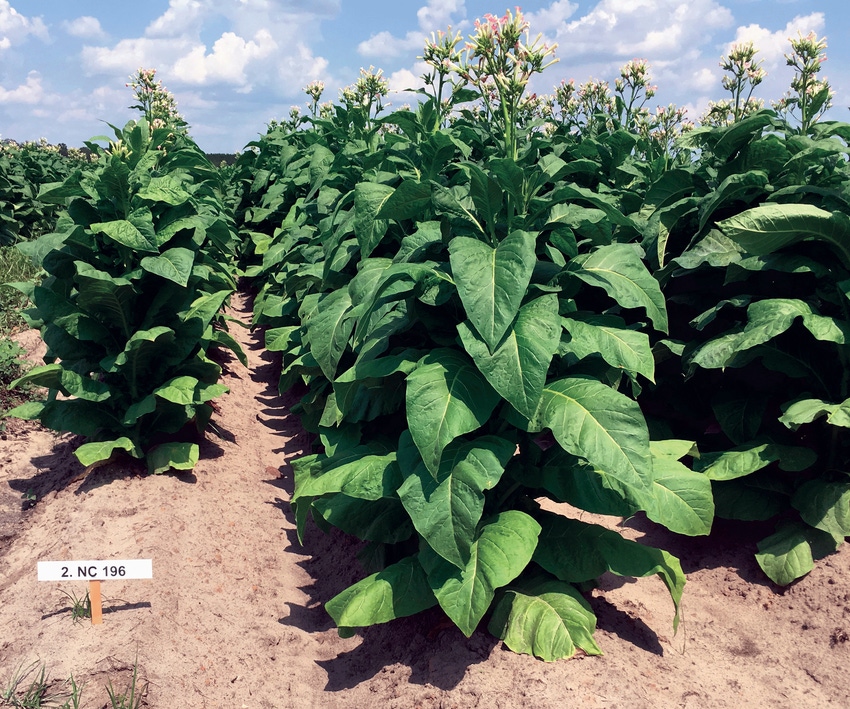July 8, 2016

American flue-cured tobacco growers have a problem with neutral filler leaf.: too much of it has been produced already.
There is a world over-supply of this type of leaf, and it can be obtained from almost any foreign producer at a lower price than in the United States.
So the pressure is on from buyers who don’t want this style — generally the three or four lowest leaves on the stalk — brought to market.
“We are talking about neutral leaf at best, and we have a lot of it,” one leaf dealer told Southeast Farm Press. “This problem has gone on forever.”
Farmers agree on a contract amount directly with the manufacturers or their dealers. If they voluntarily reduce their yields — which is what not harvesting the lower stalk will likely do — they have nowhere to look to for compensation except their companies.
“It would seem that this would be simple enough,” said the dealer. “It should be just a matter of paying farmers enough for their upperstalk leaf to make up for what they lose on the lowerstalk. But there has been a lot of disagreement about what that should be, and it is proving a real dilemma.”
Use the harvester to remove the bottom leaves?
There was considerable thought over the winter among flue-cured growers who mechanically harvest as to whether they should use the harvester to remove the bottom leaves. But J. Michael Moore, Georgia/Florida Extension tobacco specialist, thinks it makes more sense just to leave them in the field.
“Set your harvester at a level that leaves all but the best lugs, and make a good primings grade for your first harvest,” he says.
However you do it, the percentages don’t favor harvesting the lower leaves this season, Moore said.
“It is likely (we will have) an inferior quality tobacco at the bottom, and we don’t need to be spending money on harvesting, curing and baling it.”
He emphasized that the over-supply situation is real. “When your buyer says ‘I can’t sell your first harvest,’ you have to believe him,” he said.
Burley
The situation is a little different for American burley. The market actually wants more lowerstalk burley leaves than it is currently getting. Called flyings, they are in short supply on the current market, partly because it is difficult to produce a true flying.
“We are encouraging growers to separate true flyings from cutters if they can,” said Don Fowlkes, agronomist for the Burley Stabilization Corporation in Springfield, Tenn. “But farmers usually end up with a bottom grade that is a mixture of flyings and cutters.”
Stalk position grades above the flyings and cutters level need to be medium to heavy bodied, not thin, he said, and have desirable color.
Here are some ways to improve your chances of producing this style of burley:
Choose varieties that cure well on your farm;
Plant in well-drained, fertile deep soils that are not deeply sloped, and fertilize and lime according to soil test results;
Take out the tops of the plants in a timely manner, and use sucker control chemicals as directed;
Timely harvesting;
Space sticks properly and manage the curing environment;
Separate your cured leaf by grades in a way to get the maximum value of your leaf from all stalk positions.
“In broad terms, the upstalk burley tobacco our customers want is best described as being medium to heavy bodied with a tannish-red to red color line,” said Fowlkes. “Not tobacco that is thin and bright (buff, light tan, K color lines), but also not tobacco that is excessively dark or black.”
In other tobacco news
The worst outbreak of tomato spotted wilt virus in perhaps 10 years struck flue-cured in Georgia and Florida this spring, said J. Michael Moore, Georgia/Florida Extension tobacco specialist, and was spreading into the Carolinas. The mild conditions in winter and spring were the likely cause.
To make matters worse, blue mold was spreading too. It had first appeared before Easter. “It has only been at a low level on lower leaves and will likely be reduced with warmer and drier weather,” said Moore. “But between blue mold and TSWV, the value of the downstalk leaves is likely to be reduced.”
Finally, because of excessive rains in June, an unusual degree of black shank was expected in Georgia and Florida. It was already showing up in South Carolina, said William Hardee, Clemson Extension agent, on June 19.
You May Also Like




